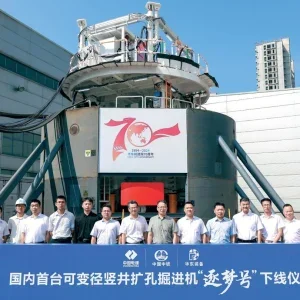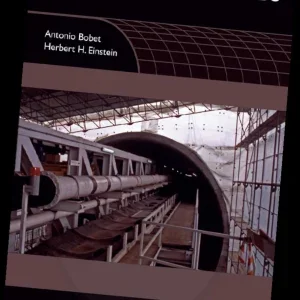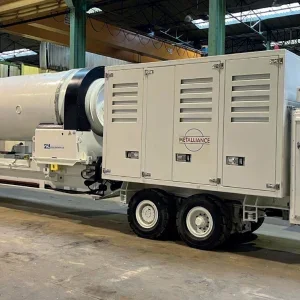LA CROIX-ROUSSE (the Red Cross) hill in Lyon, France was the centre of the city’s 19th century silk industry. Although there were over 7,000 mechanised looms in the city, and following 1815 the industry enjoyed an average growth of four per cent for 65 years, it was more of a fine craft capital than an bustling industrial centre, with the 7,000 mechanised looms representing around 20 per cent of the total in 1875. Still, not all was well. Social issues marred the period. Three revolts by the Canuts (silk workers) took place in 1831, 1834 and 1848 against poor treatment and worse salaries. The 1831 revolt was in response to a refusal by the manufacturers to set a minimum price for silk and the 1834 was due to owners cracking down on increasing worker salaries while the industry boomed. The 1848 insurrection was much the same as the second, but took place in the European ‘Year of Revolutions’ and is less of an isolated issue.
In the modern day, the hill is the site of a road tunnel built in 1952, the Croix-Rousse Tunnel, which like the conditions of workers a century before, recently needed to be brought up to an acceptable standard. Work that began in November 2012 has just been completed as Tunnels goes to press, with the tunnel reopening on 2 September 2013.
The current standards necessitated work on rehabilitation of the existing road tunnel and its five ventilation ducts and installations. Work has required asbestos removal, demolition, waterproofing. In addition, a second 1.76km (‘north’) tube was required to serve primarily as a safety gallery for the road tunnel has been excavated by traditional methods. This additional tunnel, linked to the original by 11 connecting galleries, is designed to allow for ‘green-mode’ transport, i.e. pedestrians, cyclists and buses. There is also the future possibility for a two-way tram to replace the buses.
SITUATION FOR THE NEW TUBE
La Croix-Rousse forms the eastern end of the Lyonnais Plateau. Bedrock consists of granite and gneiss. Miocene and Pliocene tertiary sedimentary rocks cover almost all of this, with a mantle of quarternary soil above. The hill is a plateau, flat with steep inclines. Tunnel overburden is around 60m (throughout the plateau). Galleries into the hill have been excavated over the centuries and have resulted in some surface settlement in the past. Recent surveys for the new bore supplemented knowledge from the 1952 construction, and the tunnel entrance on the Rhone side of the hill interfaces directly with existing masonry support walls and foundations of demolished buildings, often filled in during construction of the original tube.
The approach to the portal on the Rhone side is on a major incline in the urban city centre and required a 30m-high soil nail wall with a surface area of approximately 550m2. Some 3km total length of nails, and two anchored beams support the wall. The rest of the tunnel entrance works involved a trench between two curtains of jointed piles and a front wall anchored by fiberglass nails.
It was key that the entrance had to be adjustable in case expected displacement thresholds were ever exceeded. The engineers opted for passive anchoring to create a reinforced foundation, combined with active anchoring with additional tensioning capabilities to control displacement of the nailed foundation and the structure.
THE SINS OF THE FATHER
The engineers reported that there was no indication why the earlier tube was built 1,753m-long with a flat profile, considering the drainage difficulties. This was unchanged during renovation, and due to disabled access, connections between the tunnels could have no more than a four per cent incline. While the new tube incline never exceeded 0.12 per cent with the highest point in the middle. A difference of only 1m between the ends.
These complications, as well as the difficulty of excavating trenches in granite (and road closure minimisation), made of pumping, writing: "The chosen solution in the project phase has consisted in splitting the Southern tubes into three sections of the same length (approximately 600m), each centred on a low point located at an ITG, where pumping stations for clear water and greywater pump the water to the Northern tube drainage network. This
means that the depth of the drainage networks in the Southern tunnel does not have to exceed 2.2m below the finished roadway. Consequently, no drainage network emerges from the renovated Southern tube, which has also solved the problem of crossing the future subway located immediately at the tunnel exit on the Rhône side.
"Pumping stations are located at ITGs 2, 6 and 10. For other reasons relating to the organisation of works and worksite phasing, these were widened from a diameter of 3.3m to 6.2m, allowing site traffic to pass through. The clear water pumps were designed to cater for estimated water ingress levels. For the wastewater network, the pumps were designed on the basis of the regulatory rate of 100l/s which applies in the event of an incident in the tunnel".






